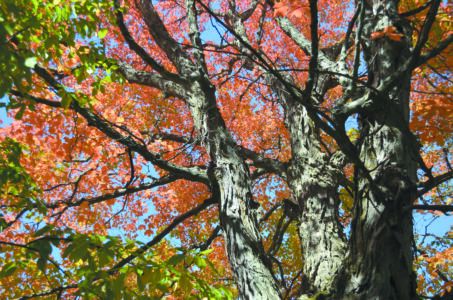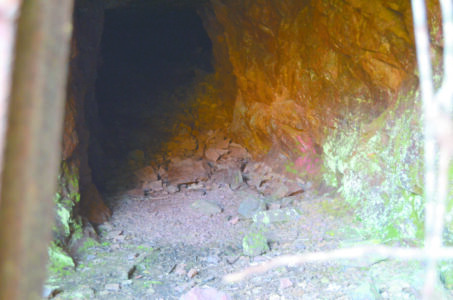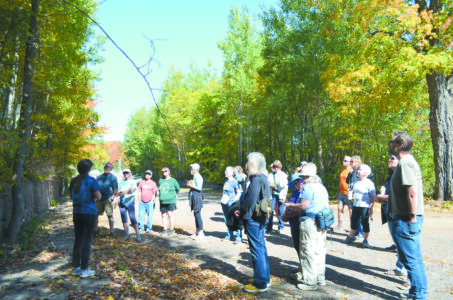Exploring the forest forensics of Old Towne Negaunee
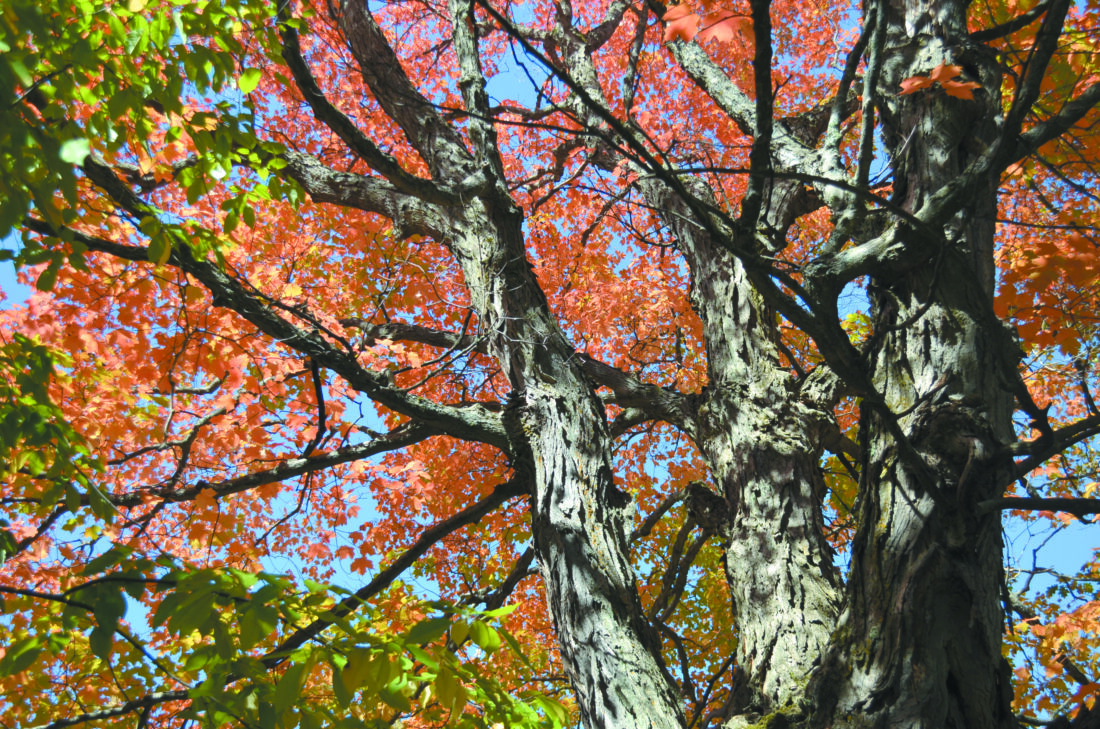
An old sugar maple tree potentially planted by the settlers of Old Towne, which Ellis estimated to be between 150-200 years old. (Journal photo by Abby LaForest)
NEGAUNEE — The Marquette Regional History Center and the Michigan State University Extension held a joint hike through Old Towne on Thursday afternoon to teach about forest forensics.
Anna Ellis, a Forestry and Natural Resources educator with the MSU Extension, led a group around the sights of Old Towne and taught tips and tricks regarding forest forensics, or the ability to use clues within a landscape to determine what sorts of human activities have occurred in that area.
From identifying the ages of plants to seeing how the bulging roots of trees interact within enclosed spaces of concrete, Ellis and MRHC administrative/education assistant Emily Varga taught hikers about the history of Old Towne and how the natural and manmade worlds aren’t as separate as they might seem.
“The (Mather) B Shaft underground were, well, known as the Caving Grounds, — that’s what we’re going to be walking on today — which is now known as Old Towne,” introduced Varga at the beginning of the hike. “This was a vibrant neighborhood, right above the bluff and area of the mine. As sidewalks, streets and buildings started to sag, the decision was made that many people’s homes, a large school-turned-youth center, a small hospital, stores, an inn and a Scandinavian church all had to be moved or razed. This process began in 1964.”
Varga and Ellis took the group through notable sites in the Old Towne area, such as by the old Jackson Mine pit and drift opening entrance, the site of the former Jackson Mine School and flora that had potentially been planted by the settlers of Old Towne, including old sugar maple trees and wild Lily of the Valley. Ellis even shared some helpful tips for identifying the approximate ages of trees, using a sugar maple as an example that she believed to be between 150 to 200 years old.
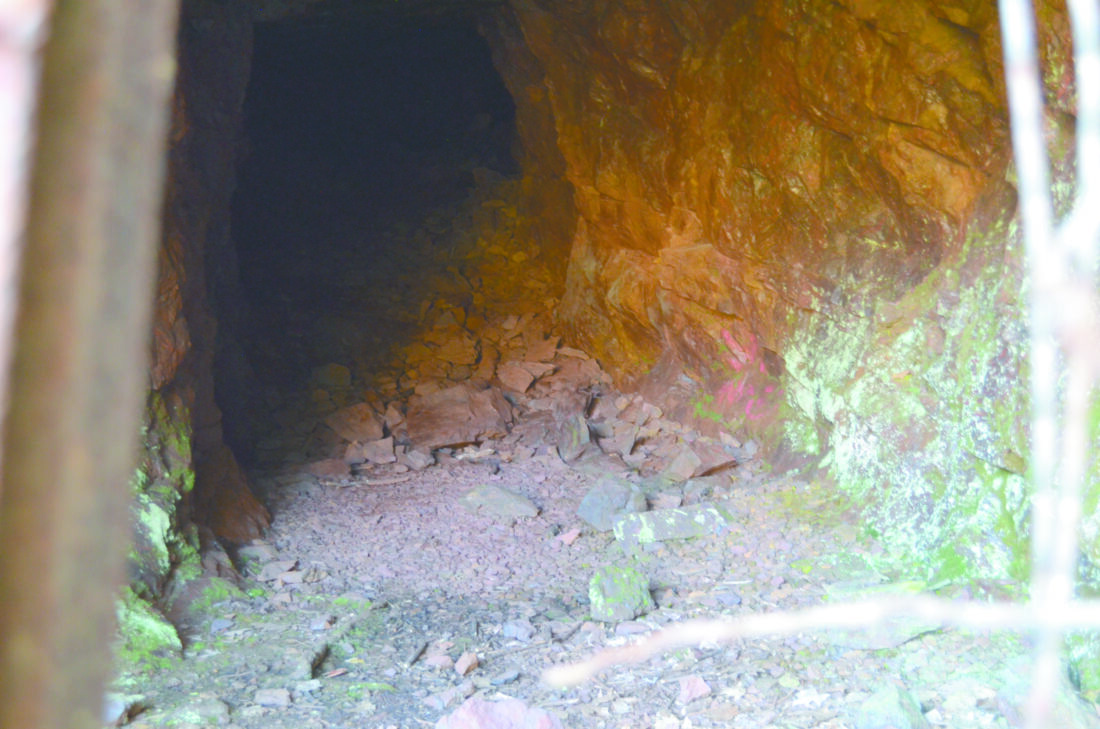
A peek inside of the old entrance to the Jackson Mine, which is blocked off for safety reasons. The gate allows visitors to keep their distance and catch a glimpse of the inside. (Journal photo by Abby LaForest)
“I think that this tree’s probably (at least) 150 years old, and I say that because it’s just so big. Sugar maple is a really slow-growing tree. That’s why its wood is so highly sought after, because when trees grow slowly, the growth grains are really tight, and that creates really structurally sound wood,” Ellis explained.
Ellis also elaborated on just how unique the geology of the Marquette Iron Range is due to how it was formed and the sheer ages of the land around it.
“This whole iron range is very unique geologically because of what happened with the tectonic plates pushing the minerals up,” said Ellis in regard to iron ore deposits at the Jackson Mine. “When (miners) arrived here to start mining. …there wasn’t a pit yet. It was a mound of 150 feet of iron ore. Originally, when they started mining, they were starting from the top and working their way down, and eventually they reached the soil and realized ‘Oh, we need to start digging.’ That’s when they started tunneling to the south and west of this mine.”
For those who are interested in reading more about Forest Forensics, Ellis suggests that they read Tom Wessels’ book and field guide “Forest Forensics: A Guide to Reading the Forested Landscape.” Wessels originally coined the term “forest forensics,” and is well known for his work relating to natural history, sustainability and conservation biology.
The MSU Extension will be hosting more history hikes in the future and additional information for their events in Marquette and Alger counties can be found online at canr.msu.edu/outreach/events.
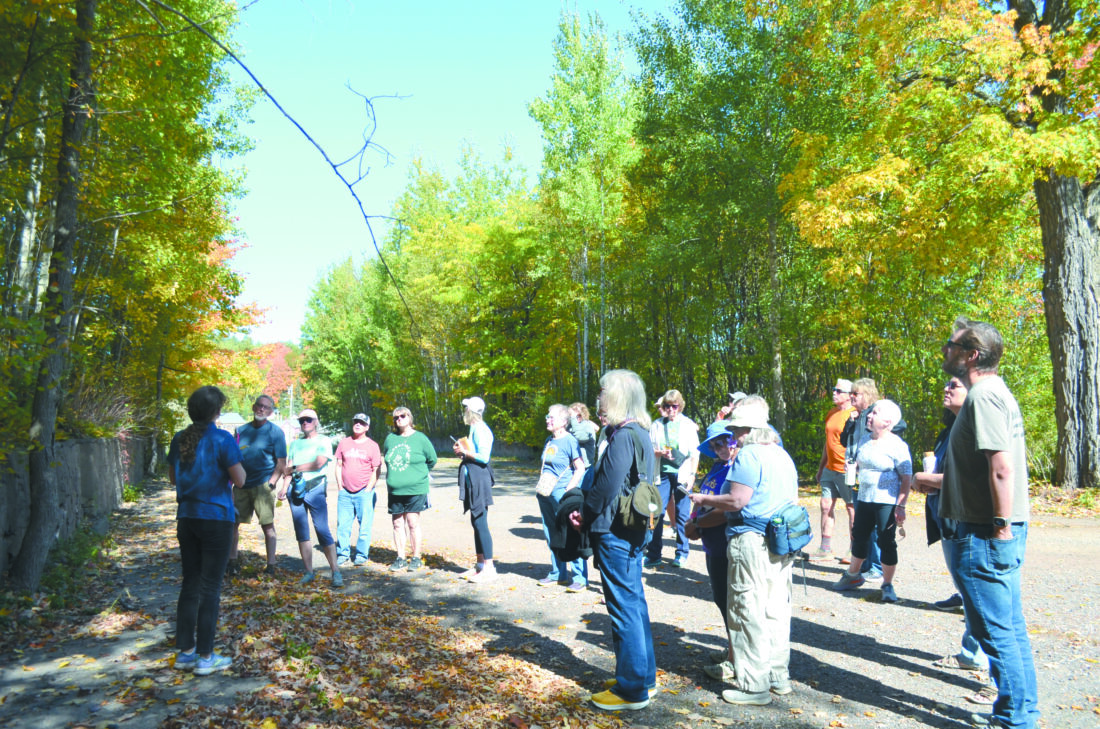
Michigan State University Forest Extension Forestry and Natural Resources Educator Anna Ellis educates a group of hikers as part of the Extension’s collaborative history hikes with the Marquette Regional History Center. (Journal photo by Abby LaForest)
Abby LaForest can be reached at 906-228-2500, ext. 548. Her email address is
- An old sugar maple tree potentially planted by the settlers of Old Towne, which Ellis estimated to be between 150-200 years old. (Journal photo by Abby LaForest)
- A peek inside of the old entrance to the Jackson Mine, which is blocked off for safety reasons. The gate allows visitors to keep their distance and catch a glimpse of the inside. (Journal photo by Abby LaForest)
- Michigan State University Forest Extension Forestry and Natural Resources Educator Anna Ellis educates a group of hikers as part of the Extension’s collaborative history hikes with the Marquette Regional History Center. (Journal photo by Abby LaForest)

